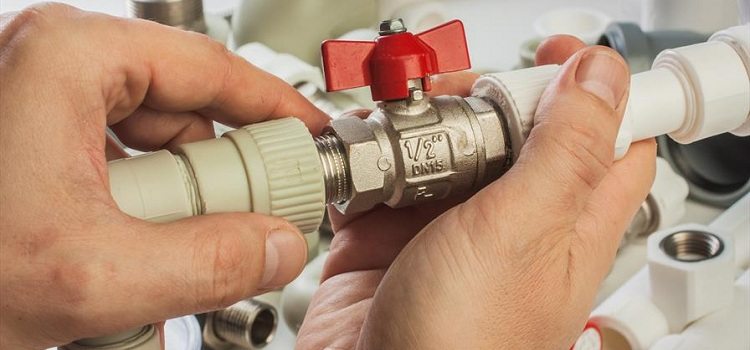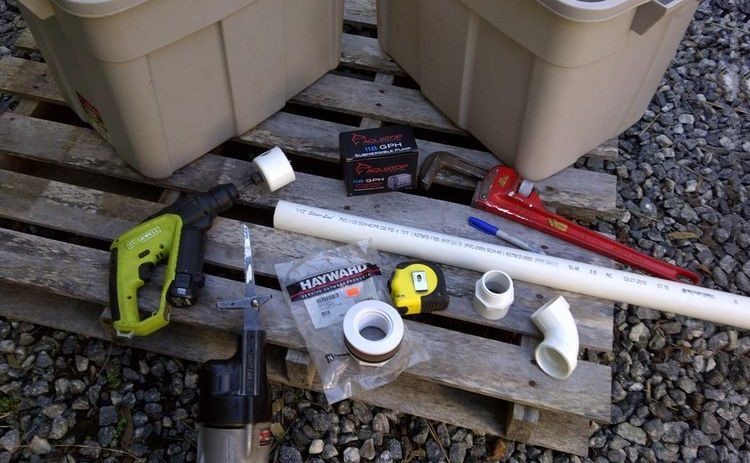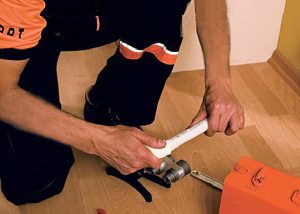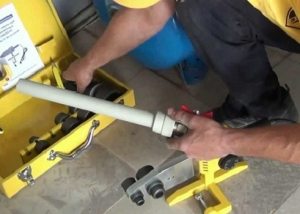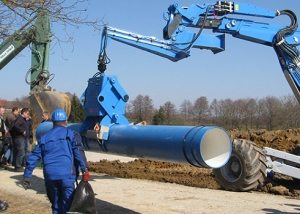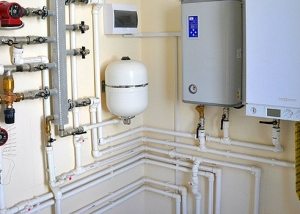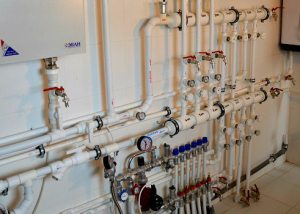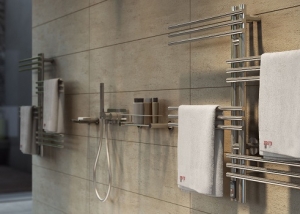Having made the decision to improve the housing, you have probably already considered the question of how to lay your own water pipes from polypropylene. Due to the low operational characteristics, metal pipes at the present stage of technology development are considered to be atavism. At the same time, even a beginner can assemble a system using polypropylene products. The main thing is to carry out work strictly according to technology, and then the water supply will last about 50 years.
Content
Benefits of PP Communications
Before proceeding with the installation, it is necessary to prepare a project and purchase material. And here the question arises - what is better for a water supply system, metal-plastic or polypropylene? The experts did not come to a consensus, so it would be useful to know the arguments in favor of each option. Comparative characteristics of both types of pipe products are presented in the table below.
Table 1
| Parameter | Metal plastic | Polypropylene |
| Cold water system. Service life, years | More than 50 | 50 |
| Hot water system. Service life, years | 50 | 25 |
| Maximum temperature | + 110˚С | + 95˚С |
| Working temperature | + 95˚С | + 75˚С |
| Working pressure, atmospheres | 10 | 10 |
As you can see, metal-plastic products according to technical characteristics are more preferable. However, it should be noted that for household use the properties of polypropylene pipes are quite sufficient, therefore, it is not worth fearing their premature breakdowns and damage.
However, they have the following obvious advantages:
- low cost. Making the water supply in the apartment with your own hands from polypropylene will cost you 25-40 percent cheaper than if you would use metal-plastic pipes;
- It has already been said above that the installation of pipes from this polymer requires significantly less labor. So if volumetric work is performed for the first time, then when choosing between polypropylene and metal-plastic, preference should be given to the first option.
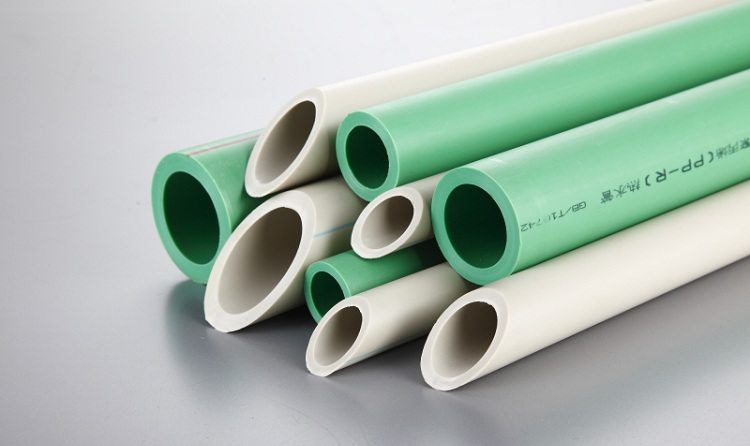
Polypropylene pipes on technical characteristics are not inferior to other types of polymer products
Water system design
Installation of a water supply system from polypropylene pipes in an apartment will not cause complaints, provided that a wiring plan has been previously competently drawn up, containing requirements for connections and fastenings of structural elements. This approach involves minimizing the length of the pipeline and the absence of unnecessary bends and unnecessary parts in the project.
Advice! To get the most accurate picture of the final product, namely, to find out the number of bevels and bends, the places where the pipes intersect, lay the laying pattern directly on the walls with a pencil.
Polypropylene "hot" and "cold" plumbing can be implemented in two ways: open or closed. The second, despite being more complex, is used more often. Here you can not do without an accurate calculation and professional performance. Most of the pipeline should be made without joints.Welding does not reduce the reliability of the entire system, but it is better to leave the connection points open. So you can regularly inspect your water supply and carry out maintenance work with it without difficulty.
Open wiring is a completely different matter. The choice of this option also allows you to make the pipes less "noticeable". This is achieved by laying them on the floor level in horizontal planes, and in the corners of the premises the pipes are placed vertically.
Open wiring has the following advantages:
- ease of installation;
- ease of maintenance;
- the ability to quickly replace part of the system in the event of a leak.
It should be noted that the wiring of polypropylene pipes in the bathroom and in the kitchen can be performed both open and closed. This is another plus in favor of pipe products from this polymer.
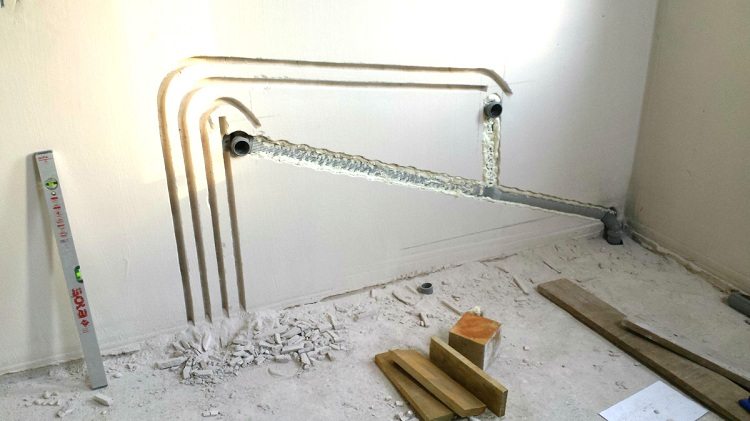
Closing a system in a closed way is more time-consuming: it is necessary to make strobes and carefully seal the pipe joints
Materials and tools. Getting to work
Having developed the scheme and made its drawing, you can go to the building materials store to buy the necessary tool.
- First of all, you need to purchase a soldering iron for working with plastic. Plumbers call it an iron. If you do not plan to constantly engage in the installation of water pipes, you can buy a cheap similar device, since you do not need an expensive soldering iron, which has a long warranty;
- polypropylene pipes will need to be cut. Special scissors are used for this. They are inexpensive. However, it is allowed to perform this operation with a hacksaw;
- angles, tees and other fittings that perform the function of connecting elements are also acquired. They are made from the same polymer as the pipes themselves. But their diameter is different upwards, and it is recommended to purchase them with a small margin;
- In addition, you will need a building level, square, measuring tape, adjustable wrench, marker and rags. Do not forget about gloves. They will prevent thermal burns during servicing of nozzles.
Before installing a new pipeline, you will need to dismantle the old one. To do this, close the main riser in the apartment. Then carefully remove the pipes. For convenience, they can be cut in suitable places. Excessive destruction must be avoided. Otherwise, you will be forced to rebuild the floor and walls.
If you need to replace all the water communications in the apartment, you will have to contact the Housing Office, because without blocking the riser in the entire entrance, you will not be able to perform this procedure. Moreover, so as not to cause trouble with neighbors, they should be warned about the impending lack of water.
Mounting Features
First, pipes are selected for assembling the water supply circuits of both types - hot and cold.
On a note! To make a choice correctly, you need to know the labeling of such products. For most manufacturers, it is universal.
- on polypropylene pipes for cold water there is such a sequence of characters: PN10;
- for the organization of cold and hot water, universal pipe products are used, marked as follows: PN16. It does not cost much more, so in this case only such pipes should be purchased;
- if an autonomous boiler room is installed in the house and you use very hot water, purchase PN20 products with internal quality reinforcement.
The following restrictions are imposed on the diameters of the polypropylene water pipes:
- a compact pipeline with a loop length of less than 10 meters, can be created from pipes with a diameter of 20 millimeters;
- when the total length of the contours does not exceed 30 meters, the minimum diameter should be 25 millimeters;
- contours longer than 30 meters are created from polypropylene pipe products with a diameter of 32 millimeters. The same section should have risers for supplying cold and hot water.
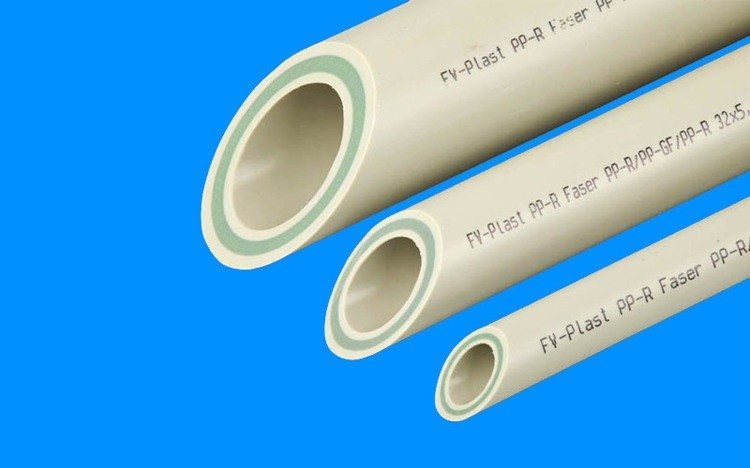
The diameter of the pipes is selected depending on the type of water supply and its length - the longer the circuit, the thicker the pipe should be
The wiring of polypropylene pipes itself can be performed according to two schemes:
- parallel - assumes the presence of a collector that has several conclusions. Each of them is connected to a separate circuit for a specific consumer. This option provides the ability to evenly distribute the pressure inside the water supply system. However, the implementation of such a scheme will require more financial costs. However, despite this, experts recommend a choice in favor of this particular option;
- consecutive - from the riser or trunk, a horizontal branch is laid with the subsequent insertion of tees into it. From these fittings, pipes are routed to consumers. The cost of this design is significantly lower than the previous one, but if several cranes are turned on simultaneously, the pressure will noticeably decrease.
The formation of pipe joints
This procedure has no difficulties. However, ignorance of how to make a water pipe from polypropylene with your own hands will not allow you to create a reliable design. Installation involves the following actions:
- First, the pipe fragment to be laid is cut off. To do this, you can use a conventional saw for plastic, but it is better to perform this operation using a special pipe cutter.
- To get a stronger connection, you need pipe stripping (its edges) from burrs.
- Then fittings are selected. All elbows, bends, couplings, adapters should be purchased in advance.
- Then a soldering iron for pipes is taken, a pair of nozzles with a section corresponding to the diameter of the fitting and pipes that will be worn on these nozzles are inserted into it.
- Next, the joined parts are put on the above nozzles, and after that the soldering iron is turned on. The degree and time of heating are values derived from the power of the device and the pipe walls.
- After the heating is completed, the parts are removed from the nozzles and the pipe is pushed into the fitting without rotation.
- The connection is maintained for 30 ... 40 seconds, after which it must be allowed to cool. The process of complete polymerization of polypropylene lasts no more than an hour, so it will soon be possible to verify the correctness installation of a water supply system from polypropylene pipes, primarily regarding the tightness of the joints.
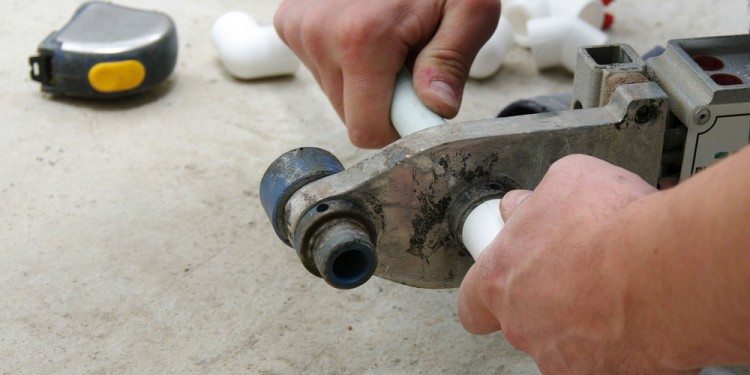
Installation of polypropylene pipes is carried out by welding, for this you need to have a special apparatus
Advice! To eliminate errors, you need to focus on the table that comes with the soldering iron.
Features of polypropylene water supply in the country
The problem of water supply of a summer residence worries many owners of suburban real estate - gardening enthusiasts. After all, then it will be very difficult to organize a full-fledged watering of a personal plot, without which you only have to dream about the crop. And the implementation of an alternative option - to carry water from a well or the nearest pond, will require excessive physical costs. The most effective and real solution is to equip a summer water supply system in a country house with polypropylene pipes.
But before that it is necessary to determine its location. The water conduit can be of two types:
Permanent water supply. It is laid underground and, as the name implies, does not provide for dismantling, at least until it fails. Subject to certain rules, it will be possible to use it not only in summer but also in winter. We are talking about the implementation of methods that prevent freezing of water in the pipeline in severe frost.One of them is laying a water conduit at a depth below the freezing mark of the soil. If this is impossible to realize, the pipes will have to be insulated. However, since the question is now being considered, how to install exactly the summer water supply in the country from polypropylene pipes, it will be useful to know some features of the permanent option.
The system is laid between trees in places of lawns at a depth of 25-30 cm. The areas passing under the beds to prevent damage during digging should be deepened by 40-45 centimeters and even more. To prevent the pipes from breaking during the winter cold, in the fall, when the watering season is over, water must be drained from the system. If the slope has not been created, this can be done by purging with a compressor.
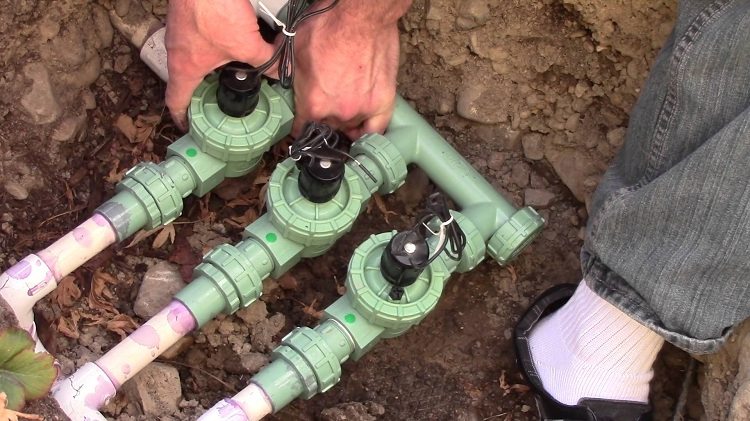
The water supply system, which will be used year-round, must be laid underground, in specially dug trenches
Collapsible system. A conduit of this type is laid on the surface of the soil. The advantages of this option include:
- quick laying and ease of connection to various water sources;
- all leaks that occur immediately become noticeable;
- Requires minimum maintenance.
However, it is recommended to disassemble and carry it off the site before the onset of cold weather. Otherwise, in winter, its elements can simply steal.
Good to know! To create a summer water supply, experts recommend the use of polypropylene pipes of PN10 or PN16 brands.
Installation sequence
Installing a summer water supply involves the following activities:
- drawing up a detailed network diagram with mandatory binding to the site plan. It should be marked not only equipment (sprinkler heads, taps, etc.), but also without exception, all the details of the pipeline - plugs, tees, corners, etc. The main wiring is usually carried out using a pipe with a diameter of 40 millimeters. For taps to the points of water intake, polypropylene pipe products with a diameter of 25 or 32 millimeters are used. The diagram should indicate trench depth. The value of this parameter is on average 30-40, and under the beds 50-70 centimeters. It is also necessary to consider the methodology of drainage of the system. Typically, pipes are laid with a bias to the source of water, and if such is the central water supply, then in the direction of the inset into it. A drain valve should be present at the bottom point. The location and number of water taps are calculated taking into account that short sections of hoses, the length of which does not exceed 5 meters, can be used to water the entire household plot. If the system is installed on a standard site with an area of 6 acres, there can be up to 10 water intake points;
- after the development of the summer water supply scheme, a specification is drawn up. Equipment and materials are purchased based on it;
- if country water supply is supposed to be connected to a centralized network, then it will be necessary to make an insert. The easiest way, besides not requiring a water shutdown, is performed using a special part - a saddle. It is a clamp with a threaded pipe and a seal. First, this part is mounted on the pipe. Then a ball valve is screwed onto its pipe, and then a hole is made right through it in the pipe wall. After that, the valve closes immediately;
- the next stage is the preparation of trenches for laying pipes;
- Further, the system is assembled. That is, pipelines are connected to taps and other components through fittings;
- upon completion of assembly, the finished water supply system is tested for leaks. To do this, water is supplied to it and the state of the compounds is observed for some time;
- if leaks do not appear, trenches with water supply are buried.
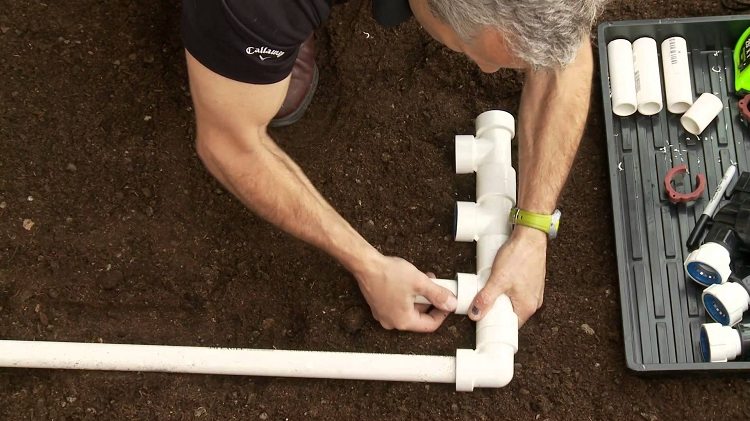
To connect the pipes, fittings made of the same material as the pipes are used, they can be welded or glued
Devices and devices
To make the summer summer water supply systems more practical, the following devices are used:
- fitting. With it, attaching the hose to the tap is very fast. On the one hand, it has a “ruff”, which is simply inserted into the tap, and on the other, a spring grip;
- corrugated hoses. When they are folded, very little space is required to store them;
- special components for organizing drip irrigation;
- watering guns and sprayers equipped with special akvastop couplings.
- hoses, as well as special accessories for organizing drip irrigation;
- watering and sprinkler heads;
- soil moisture sensors or timers. With their use, watering is carried out automatically.
Good to know! When the irrigation device is replaced, these devices automatically shut off the water (you do not need to close the tap).
And finally, one important tip. Professionals recommend installing the line in the direction from consumers to the points of water intake.
